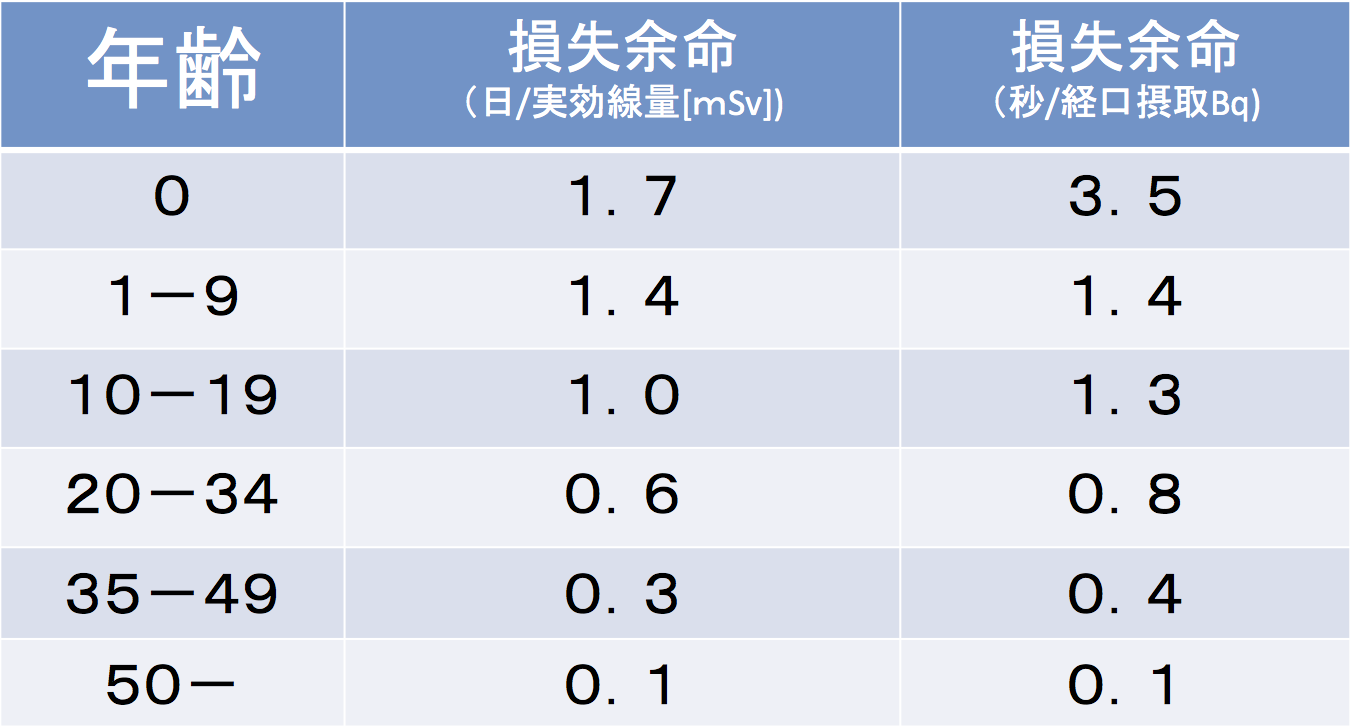タイトル
目的
小児や青年期に診断目的のX線CT検査による低線量電離放射線への曝露における、がんのリスクを評価する。
研究デザイン
オーストラリアでの人口集団ベースのデータ・リンケージを用いたコフォート研究
追跡集団
オーストラリアの10.9 百万人のメディケア記録から1985年1月1日に 0-19歳であったか、1985年1月1日から2005年12月31日までの間に生まれた方が特定された。
そのコフォートの中で1985-2005の間に、メディケアにより支出されたX線CT検査を受けた方が特定された。
コフォートの中で、2007年12月31日までの間に、がんと診断されたかどうかを、国のがん登録とのリンケージで調べた。
主要なアウトカム
がんと診断されてから、少なくとも一年以上前にX線CTを曝露したという条件での、X線CTを受けた群のがん罹患率。
それをX線CTを受けなかった群と比較した。
結果
追跡集団で 60,674のがん症例があった。このうち、一年以上前にX線CTを曝露したという条件で、X線CTを受けた群( 680,211)では、3,150件のがんの症例があった。放射線曝露後の追跡期間の平均は9.5年であった。
年齢、性、出生年で調整した結果、全体として、非曝露群に比べて、曝露群ではがんの罹患率が24%増加した(罹患率比1.24。 (95% 信頼区間l 1.20 から 1.29); P<0.001).)。線量依存性が観察され、受けたX線CTの回数が一回増えると、罹患率比が0.16 (0.13 to 0.19)増加した。 罹患率比は若年層で高かった (P<0.001 傾向性)。最初の放射線曝露後、1-4, 5-9, 10-14と 15年以上で比較すると、罹患率比は、それぞれ、1.35 (1.25 to 1.45), 1.25 (1.17 to 1.34), 1.14 (1.06 to 1.22), and 1.24 (1.14 to 1.34)であった。多くの固形がん(消化管、メラノーマ、軟組織、女性生殖器、泌尿器、脳、甲状腺)や白血病、骨髄異形成、その他の悪性リンパ腫で罹患率比は偶然変動の範囲を超えて増加していた。X線CT検査を受けた群では、608例の過剰ながんがあった(147 脳, 356 他の固形, 48 白血病あるいは骨髄異形成, 57 その他の悪性リンパ腫)。全ての悪性腫瘍をまとめた場合の、過剰な絶対罹患率は、2007年12月31日の時点で、10万人年あたり9.38であった。X線CT検査の一回当たりの実効線量は4.5 mSvと推定された。
結論
このコフォートでの、X線CT検査後のがんの罹患率の増加は、その多くが放射線によるものであった。フォローアップの終盤でも、がんの過剰が依然として継続していたことから、X線CT検査による生涯でのリスクは結果として決定できなかった。
X線CT検査による線量は、1985-2005年に比べると、現在では小さくなっていると考えられるが、現在のX線CT検査でもがんのリスクが増加しているであろう。
今後のX線CT検査は、得られる診断CT画像を可能な限り最小の線量で得るように全てのスキャンを最適化したうえで、臨床上の適用が明らかであるものに限るべきである。
この研究の限界に関するICRPのドラフトでの議論
Draft Report for Consultation: The Use of Effective Dose as a Radiological Protection Quantity
(13) The main stochastic effect of radiation is cancer, with the principal source of information on risk being the epidemiological studies of the Japanese survivors of the atomic bombings at Hiroshima and Nagasaki, although with important information also coming from other studies (ICRP, 2007a). In general, the epidemiological data show a linear dose-response relationship between cancer rates and absorbed dose from gamma rays from around mGy to a few Gy. Attempts are being made to extend observations to lower doses/dose rates, notably studies on large worker cohorts (Muirhead et al., 2009; Haylock et al., 2016; Boice, 2015; Richardson et al., 2015; Leuraud et al., 2015) and studies of children receiving CT scans (Pearce et al., 2012; Mathews et al., 2013; Huang et al., 2014). The CT studies reported statistically significant elevation of cancer rates at doses of a few tens of mSv. However, caution has been advised in the interpretation of these studies (Boice, 2015). A number of problems were identified including lack of information on the reasons for the scans and lack of individual dose reconstruction. It is considered that the patients may well have had underlying conditions that prompted their CT examinations, an example of so-called reverse causation (UNSCEAR, 2013; Walsh et al., 2013, 2014). It will be important that future studies are rigorously controlled to avoid confounding.
さらに交絡因子の調整を試みた例
Jasmine McBAIN-MILLER. Cancer risk following childhood CT scan exposure: using propensity scores to account for confounding by indication
Inverse Probability of Treatment Weight (IPTW)の解説例
佐藤俊哉、松山 裕.交絡という不思議な現象と交絡を取りのぞく解析 標準化と周辺構造モデル
フランスでの研究
Childhood CT scans and cancer risk: impact of predisposing factors for cancer on the risk estimates
IARC
疑問点
がんの罹患が多すぎる?
X線CT検査を受けた68万人を十年間追跡したら3千人ものがん患者が発見されとありますが、発見される確率が高すぎる(0.5%)のではないですか?
日本のデータでは、40歳までだと男性の0.9%、女性の1.8%ががんに罹患しているとされます(2010年のデータの場合)。
確率だと理解できない?
損失余命での表現の方が理解しやすいかも知れません。In considering doses to patients having diseases with poor prognoses, life expectancy will be a consideration in evaluating radiation risks.
LLEに関するICRPのドラフトでの議論
Draft Report for Consultation: The Use of Effective Dose as a Radiological Protection Quantity







